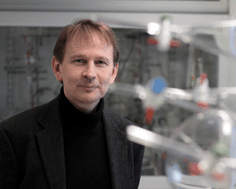Preface for the themed issue of Chemical Society Reviews†
Matthias
Beller
Leibniz-Institut für Katalyse e.V. an der Universität Rostock, Albert-Einstein-Strasse 29A, 18059 Rostock, Germany. E-mail: matthias.beller@catalysis.de; Fax: +49 381-1281-5000; Tel: +49 (0)381-12810
 Matthias Beller | Matthias Beller, born 1962, studied chemistry in Göttingen, Germany, where he completed his PhD thesis in 1989 in the group of Prof. Tietze. Then, he spent one-year in the group of Prof. Sharpless at MIT, USA. From 1991 to 1995, Beller was an employee of Hoechst AG in Frankfurt. In 1996, he moved to the Technical University of Munich as Professor for Inorganic Chemistry. In 1998, he relocated to Rostock to head the Institute for Organic Catalysis (IfOK). Since 2006 Matthias Beller is a director of the Leibniz-Institute for Catalysis. His scientific work has been published in 480 publications and >90 patent applications have been filed in the last decade. Matthias Beller has received numerous awards including the Otto-Roelen Medal, the Leibniz-Price and the German Federal Cross of Merit. In 2010, he received the first “European prize for Sustainable Chemistry” and the “Paul-Rylander Award” of the Organic Reaction Catalysis Society, USA. Matthias Beller is a member of the Association for Technical Sciences of the Union of German Academies of Sciences and Humanities, and the German National Academia of Science. He is married to Dr Anja Fischer-Beller and they have two sons. |
Imagine contemporary organic synthesis without transition metal catalysis. In essence, it is hardly possible to remember the situation 50 years ago, when organometallic catalysis began to make its way into organic synthesis. At that time carbon–carbon bond forming reactions were typically achieved by stoichiometric reactions of reactive nucleophiles with electrophiles or via pericyclic reactions. Nowadays, in basically every synthesis of modern pharmaceuticals, agrochemicals, as well as more advanced fine chemicals, transition metal catalyzed reactions constitute key steps for carbon–carbon bond formation and more.
Among the various developed methodologies, without doubt palladium-catalyzed reactions play a special role. Have a look at any recent issue of any reputed international chemical journal devoted to organic synthesis or catalysis and you will discover the broad utility of palladium-based catalysts. As a prominent example the so-called cross coupling methodologies have become one of the most powerful tools for the creation of C–C bonds since their start in the late 1960's. In general, bond formation takes place between less-reactive (hetero)aryl or vinyl electrophiles, typically aryl halides, and different carbon nucleophiles with the help of palladium complexes. One could ask: why are these reactions of interest? A simple answer is provided by the fact that the majority—typically 70 to 80%—of small molecule drugs and agrochemicals contain aromatic and heteroaromatic scaffolds. Hence, in particular for the creation of better drugs but also for new material applications, organo-electronic materials, selective functionalizations of arenes and heteroarenes are of tremendous importance. Obviously, apart from being scientifically interesting, cross coupling reactions are also of economic importance for the chemical and life science industries. In fact, to my knowledge in the past twenty years there has been no other catalytic methodology which has so often made the transfer from the mg-scale in academic laboratories to the ton-scale in industry. Until today, numerous examples of Mizoroki–Heck, Suzuki, Kumada, and Sonogashira reactions, related carbonylations and cyanations as well as associated Buchwald–Hartwig aminations were applied or are currently used on an industrial scale. Ironically, in their beginning palladium-catalyzed cross coupling reactions constituted “pure” basic science and it needed nearly fifteen years for the first industrial realization—at that time at Ciba-Geigy for the production of Prosulferon, an agrochemical which is still produced today via Matsuda–Heck reaction. Unfortunately, today the time line for such a transfer of ground breaking basic research to new applications is often underestimated and it's clear we need more patience for such processes.
This issue of Chemical Society Reviews covering various state-of-the-art cross coupling reactions is devoted to the three Nobel Prize winners of 2010: Richard F. Heck, Ei-ichi Negishi and Akira Suzuki. Based on the pioneering work of them and their research groups, organic synthesis has been changed in the past decades and has become significantly more efficient.
Due to the broad applicability, cross coupling reactions have evolved over the years into one of the major areas of organometallic and organic chemistry. The significant progress still seen today in this area is only possible by important contributions from research groups all over the world. Clearly, their ideas and the general advancement in this area are often a result of close interaction between the different research groups. This is also nicely illustrated in this issue. I hope the reader enjoys the presented chemistry as much as I and finally may the different articles be an inspiring source for further ideas and progress into the direction of a sustainable organic synthesis.
Footnote |
| † Part of a themed issue on the topic of palladium-catalysed cross couplings in organic synthesis in honour of the 2010 Nobel Prize winners Professors Richard F. Heck, Ei-ichi Negishi and Akira Suzuki. |
| This journal is © The Royal Society of Chemistry 2011 |
